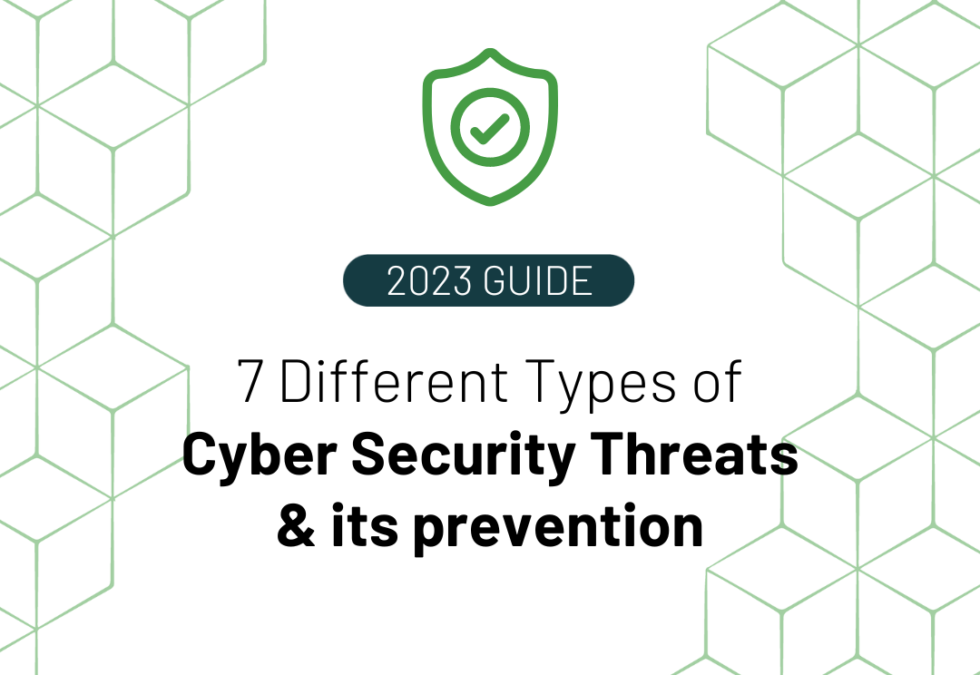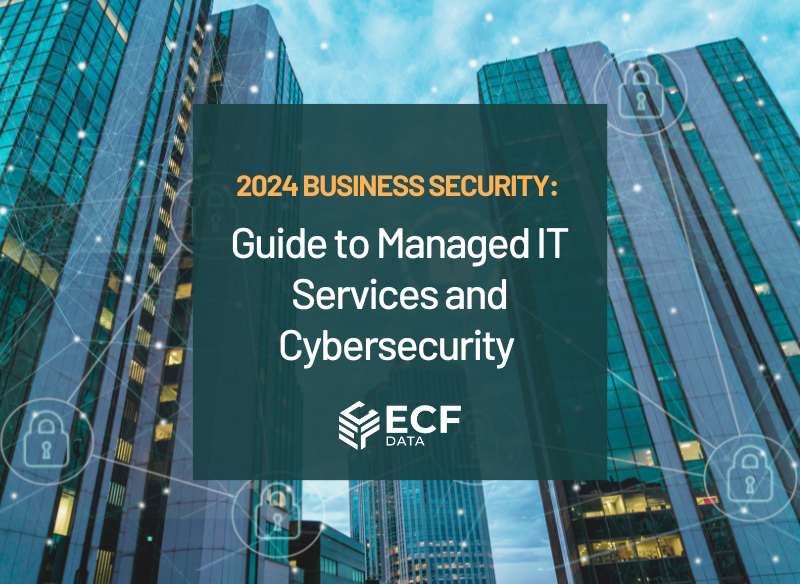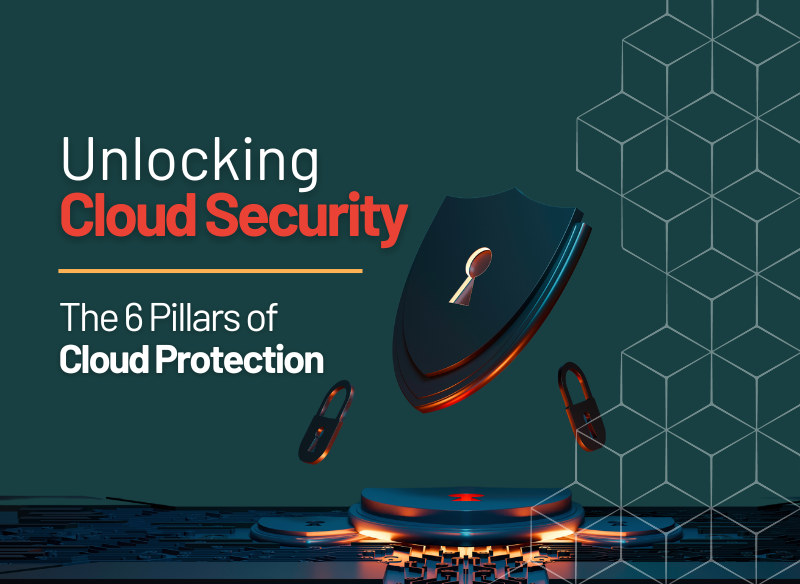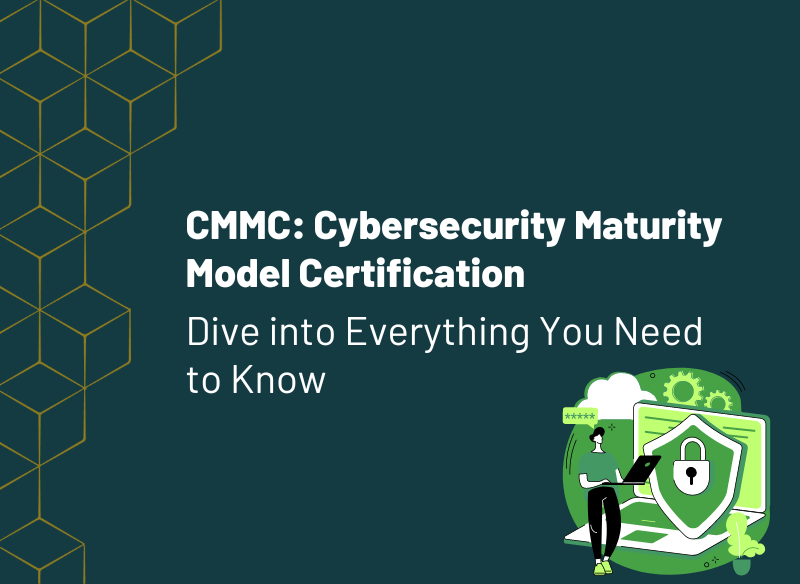-
By: Janina Criador
- Cyber Security
- March 28, 2023
- Comments 0
2023 Guide – 7 Different Types of Cyber Security Threats And Its Prevention
Cybersecurity Threat is not a foreign term for businesses or anyone who frequents the internet. Over the years, these threats have evolved. From a simple virus, it has now become infiltrations on infrastructure, data breaches, spear phishing, and brute force.
So far, these are the things we know:
- There was a 38% rise in worldwide cyberattacks in 2022 compared to the previous year, 2021.
- In 2022, the average data breach cost in the US was $9.44M.
- The average time it takes security professionals to find and stop a data breach is 277 days.
- A human element commonly causes 82% of data breaches.
At ECF Data, the discussion about Cybersecurity threats is seemingly repetitive. In fact, we’ve also made another post about the biggest Cyberattacks in History. But seeing the numbers rising means there are no stopping hackers, and raising awareness on preventing cyber-attacks should be continuously done. This article is an example of this. So, if you are one of those companies who feel that there’s more to do with your cyber landscape, read on!
Definition and Types of Cyber Security Threats
Because cybersecurity threats are so common, defining it can be difficult. Take note of this, cyber or cybersecurity threats are malicious acts that aim to destroy data, steal data, or otherwise interfere with digital life. Threats like computer viruses, data breaches, and Denial of Service (DoS) attacks are examples of cyber-attacks. Let’s delve deeper into the common cybersecurity types to comprehend this idea fully.
- Ransomware
Ransomware is one of the many types of cybersecurity threats that encrypts data and holds it hostage while demanding payment in exchange for a decryption key from the victim. After the victim has installed the ransomware, it encrypts files and shows a ransom letter. The only options left to victims are paying the ransom to obtain the decryption or restoring the data from a backup. Yet, most of this cybersecurity threat also encrypts or destroys network-accessible backup copies.
- Phishing
Phishing is a social engineering attack type that is widely used to steal user data, including login credentials and credit card information. It occurs when an attacker poses as a trustworthy source via an email, instant message, or text message to trick the victim into opening it. Then, a dangerous link is deceived into being clicked by the recipient. It can cause malware to be installed on the recipient’s computer, a ransomware assault to lock it down, or the disclosure of private data.
Phishing is frequently used as part of a more comprehensive attack, like an advanced persistent threat (APT) event, to infiltrate business or governmental networks. In the latter case, staff members are compromised to overcome security barriers, spread malware inside a safe setting, or gain access to protected data.
A company that falls victim to such an attack usually suffers significant financial losses and diminishing market share, reputation, and customer trust. Depending on its size, a phishing attempt could become a security issue that a company will find challenging to recover.
- Malware
Malware is a type of cybersecurity threat that also goes by the names of malicious software and malicious code. It is added to a system to jeopardize data availability, confidentiality, or integrity. It can impact your data, apps, or operating system and is done covertly.
Common Malware Types:
- Mobile Malware – uses a variety of techniques to attack mobile devices, including malicious programs, SMS exploits, and social media networks.
- Botnet Malware – incorporates a system to add it into a network of bots
- Cryptominers – mines cryptocurrency on the victim’s computer.
- Infostealers – collects private information from an infected computer and send it to the malware’s creator.
- Banking Trojans – targets sensitive financial data, including login passwords for online banks.
- Distributed Denial of Service (DDoS) Attacks
One computer is used in a denial of service (DoS) attack to saturate the target’s resources with traffic to the point where the system cannot handle legitimate service requests. The same objective is pursued by a distributed denial of service (DDoS) assault, which uses several host computers that have been infected with malware.
An illegal number of requests are made to the target site during a DoS attack. The website tries to fulfill each request, using up all its resources until it cannot help visitors. As a result, the website begins to lag and may finally go offline entirely.
Unlike many attacks, DoS and DDoS attacks do not grant authorized access. The goal is to hinder the target’s service from becoming effective. Any party that can gain financially from shutting down the target’s website, such as a business rival, may hire the threat actor.
Threat actors could also deploy DoS or DDoS as the opening salvo in a larger assault. When a DoS or DDoS assault is successful, the system is taken offline and exposed to new attackers.
- Man-in-the Middle
A man-in-the-middle (MITM) attack is a general term for when a perpetrator inserts himself into a conversation between a user and an application. It is done to either listen in on the conversation or pretend to be one of the participants and create the impression that a typical information exchange is occurring.
An attack aims to steal personal data, including credit card numbers, account information, and login credentials. Users of financial apps, SaaS companies, e-commerce websites, and other websites that require signing in are often the targets.
- Insider Threat
As the name implies, an internal danger involves an insider rather than a third party. In this situation, it can be someone who works for the company and is well-versed in its operations. The potential damage from this type of cybersecurity threat is enormous.
Small organizations are particularly vulnerable to insider threats because their employees frequently have access to sensitive data. There are several causes for this kind of attack, including avarice, malice, and even negligence. Insider threats are tricky because they are difficult to predict.
- Zero-Day or 0-Day
“Zero-day” refers to a recently discovered security vulnerability hackers use to attack systems. One of the fastest attacks that can cause serious damage. Once the seller or developer has only become aware of the flaw, they have “zero days” to remedy it, hence the term “zero-day.” When hackers take advantage of the vulnerability before developers can fix it, it is known as a zero-day assault.
Prepare Your Company for any type of Cybersecurity Threat
The complexity of managing cybersecurity threats for a company alone has increased significantly. Most firms lack the knowledge and resources necessary to run a full-fledged security operations center as well as expertise in cybersecurity (SOC). In direct result of the overburden of security teams and the severe lack of cybersecurity talent, hiring, unfortunately retaining security professionals is challenging. These factors will compel many firms to develop new ideas, such as outsourcing their ongoing security operations to a professional.
ECF Data is a small yet nimble team of experts and by working with them, you gain the following:
Access to Microsoft’s cybersecurity products
Microsoft spends approximately $1B per year to fight off cybersecurity threats. This investment does not cover the additional cost of the acquisitions in the cybersecurity market. ECF Data is a Microsoft-only shop, which means you get to take advantage of the tech giant’s investment.
Hands-on and well-rounded services from trained Microsoft partners
Do not let ECF Data’s small team fool you. In fact, it works to their advantage as they take pride in having opportunities to be personal with clients and create meaningful partnerships. The ECF Data team has no cookie cutter services, places the client’s needs over fees/timelines and gets the job done. ECF Data takes time to assess your organization and ensures that you and your teams are knowledgeable about how to prevent cyberattacks.
Credentials are matched by experience
Just like in cybersecurity threats, you must make sure that everything is covered. ECF Data knows that credentials and experience go hand in hand in preventing and stopping different types of cybersecurity threats.
In conclusion, being aware of the various types of cybersecurity threats is crucial in safeguarding your personal and professional data. By taking preventative measures such as implementing strong passwords, regularly updating software, and avoiding suspicious links or emails, you can significantly reduce the risk of falling victim to cybercrime. Additionally, it is essential to stay informed about new threats and security solutions that emerge constantly. Remaining vigilant and proactive about cybersecurity, can protect yourself and your organization from potential damage caused by cyberattacks.








